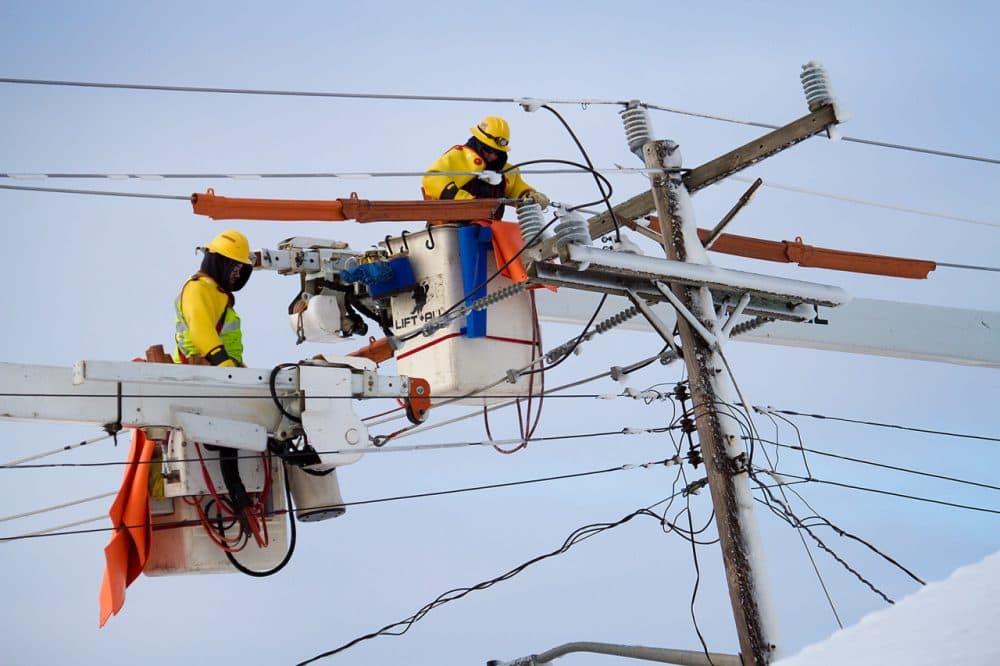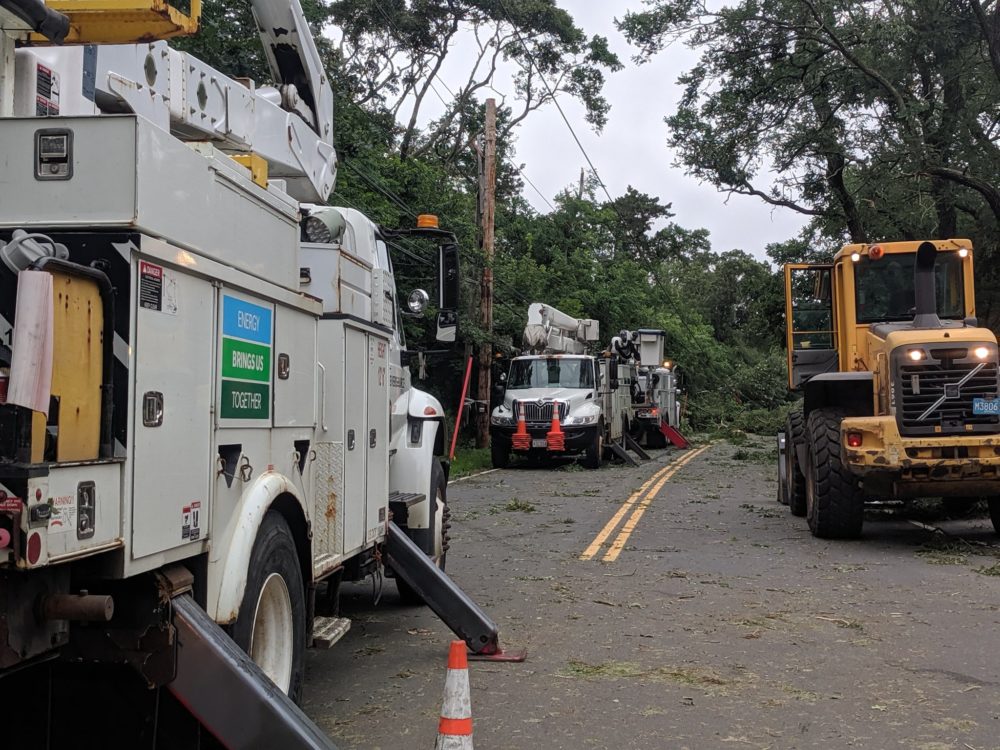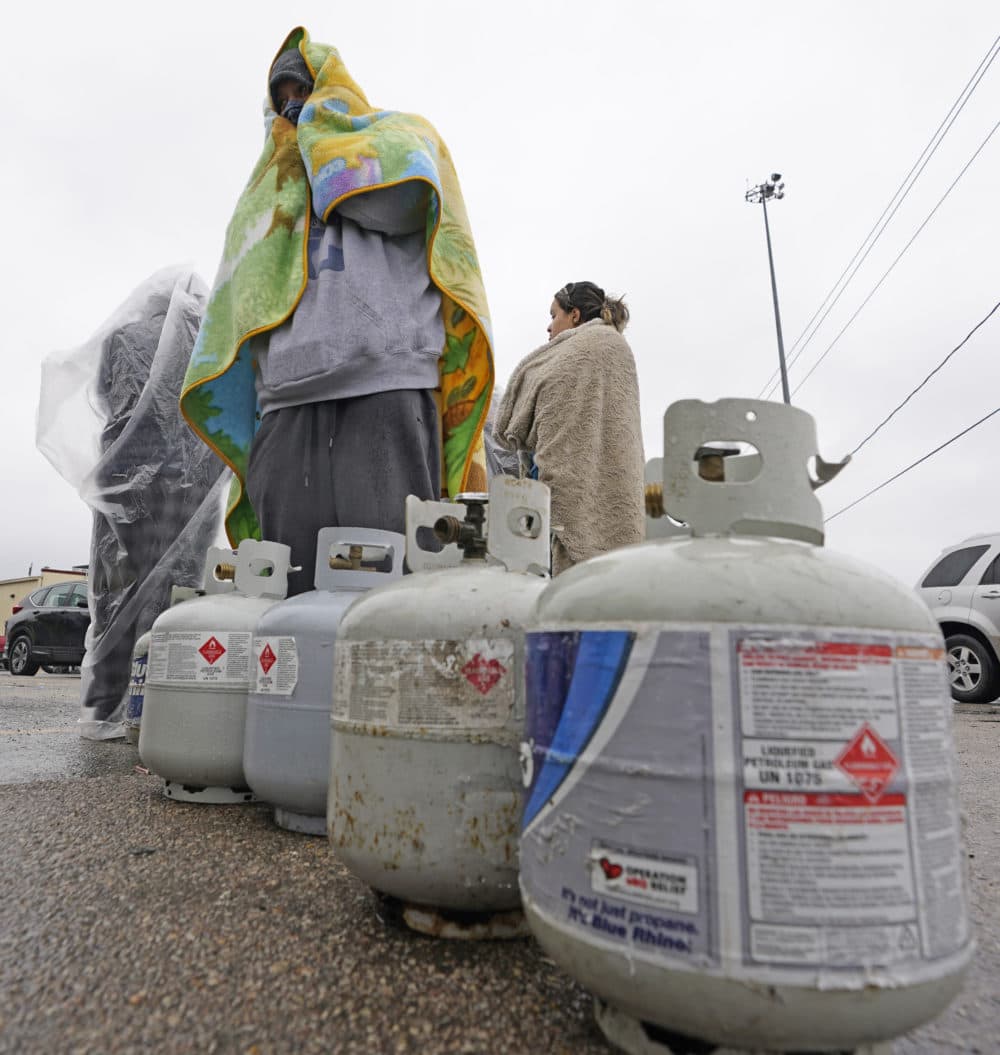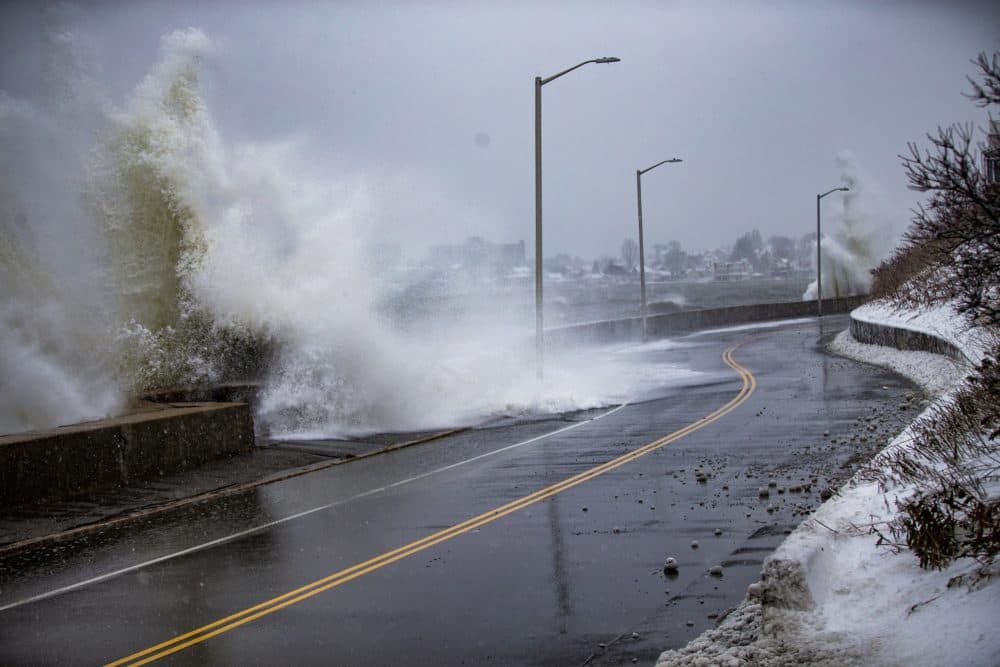Advertisement
In Wake of Texas Crisis, Advocates Say State Must Require Utilities Prepare For Climate Change

An unusually cold winter storm left millions of people in Texas without power and water last month, and left many in New England to ask, “Could that happen here?”
According to experts at the Boston-based Conservation Law Foundation, the answer is “yes.” Well, sort of.
Though the exact scenario that played out in Texas is probably unique to Texas — we don’t frack natural gas here, our pipelines and wind turbines are weatherized, we pay power generators to be ready for unexpected peaks in demand, and we are part of an electric grid that spans the entire eastern half of the country — the infrastructure we rely on to bring us electricity, gas and water is ill-prepared for the coming decades.
From severe winter and summer storms to brutal heat waves, extreme rainfall, sea level rise and coastal flooding, the effects of climate change are already apparent here in the northeast. And scientists say they’re only going to get worse.
Climate change is "going to put our power infrastructure in a more vulnerable situation. And that jeopardizes reliable service for thousands of Massachusetts residents, which affects not only the cost that they pay in rates, but also their health and safety,” says Deanna Moran, Director of Environmental Planning at the Conservation Law Foundation (CLF).
Look at what just happened in Texas, she adds. The cold snap and power outages killed at least 80 people, and is likely going to cost the state billions in physical damages and economic losses; some experts predict the final price tag will top that of Hurricane Harvey, which cost $125 billion.
"That's the latest example of what we're trying to avoid here in Massachusetts," she says.

To help protect the state’s energy and water infrastructure against climate change — and prevent both the loss of power during extreme weather and added costs to ratepayers from storm damage -- CLF filed a petition with the state Department of Public Utilities (DPU) asking the agency to require investor owned utilities like National Grid, Eversource and Unitil to study “the long-term impacts of extreme weather on their infrastructure and service delivery, assess current and future vulnerabilities, and plan for how to mitigate those risks.”
“The DPU is the Commonwealth's primary regulator of investor owned utilities, and it's in charge of ensuring safe and reliable service,” Moran says. “So this really falls very squarely in their statutory mandate.”
According to the petition, utilities should address how they’ll modify operations in the face of extreme weather, move or protect critical infrastructure, prepare disaster response plans for a variety of future climate outcomes and, importantly, update these plans every few years.
Advertisement
“We can no longer rely on historical trends to inform our decision-making, especially where it concerns critical infrastructure that has implications for public health and safety,” the petition states.
Though not involved in the CLF petition, Attorney General Maura Healey told WBUR in an email that she has many of the same concerns about how our energy infrastructure will fare in the future.
“What happened in Texas last week – the extreme winter weather, the millions without power, and the heartbreaking deaths that resulted – is climate change,” she wrote. “It’s what happens when we burn too many fossil fuels and fail to weatherize our system. It’s why Massachusetts utilities need to proactively plan for mitigating climate and disaster risk.”

Massachusetts has made strides in recent years in its climate adaptation planning — in 2016, for example, Gov. Charlie Baker signed an executive order that required all state agencies to assess their “vulnerability to climate change and extreme weather events, and to identify adaptation options for its and its agencies’ assets.”
The CLF petition notes, however, that this executive order didn’t affect utilities because they are private entities.
The DPU has also implemented some climate-related regulations in recent years, like an order that utilities submit annual emergency preparedness plans that outline how they would work with local, state and federal entities in a variety of disaster situations. In 2014, it told utilities to prepare and implement 10-year plans for the grid that include consideration of changing weather patterns. And it’s asked Eversource and National Grid to prepare “climate adaptation plans,” though according to the Attorney General’s Office, the DPU never formally approved them.
Moran of CLF says these requirements have all been positive steps, but adds that they’re often vague or theoretical and not geographically specific. CLF wants the state to require a standardized vulnerability study and mitigation plan that's published online for experts and the public to review.
Both Eversource and National Grid say they already take climate change and new weather patterns into account as they plan for the future.
“We continuously assess the physical and transitional impacts related to climate change ... We take measures to prepare for and manage the potential effects of climate change and severe weather,” Eversource spokesman Reid Lamberty wrote in an email. He cited examples such as: modernizing and hardening the electricity distribution system; using "smart switches" and automation to more quickly address outages; and building more resilient infrastructure in floor prone areas.
National Grid spokesperson Christine Milligan provided a similar list of “hardening” actions, and said that the company’s “plans for both electric and gas are enduring and are designed to adapt over time to ensure safe/reliable service to our customers.”
She added that the company is “generally supportive of the continued enhancement of our plans” and is open to requests like the one CLF made on Monday “for a required study and more long-term preparedness planning.”

Should the DPU accept CLF's advice and begin the process outlined in the petition, the agency could look to New York as a model.
In the wake of Hurricane Sandy, New York mandated its utilities undertake a study similar to the one CLF has proposed. In 2019, Con Edison, the utility that serves over 10 million people in New York City and Westchester County, published its results.
Moran calls the report a “best-practice model.” Con Edison identifies infrastructure in flood-prone areas and looks at strategies to protect it against rising sea levels and storm surge. It also examines how hotter temperatures might affect electrical wires, and explores options for better real-time monitoring of gas pipes that are vulnerable to damage from storm surge or flooding. And importantly, the utility outlines a framework for weighing the cost of adaptation and mitigation with that of inaction.
Preparing our energy and water infrastructure for climate change will cost money upfront, Moran says. But in the long run its likely to save ratepayers a lot of money — hardening an electrical substation against sea-level rise is less expensive than dealing with a flooded one that causes prolonged power outages, she says.
We need to be doing longer-term planning so that we don't have to have Eversource and National Grid coming back into the DPU every year looking for cost recovery" after big storms and floods, Moran says. “Because at the end of the day, that falls on the ratepayers [who are already] paying a lot of money for this infrastructure to continually be destroyed and rebuilt.”
